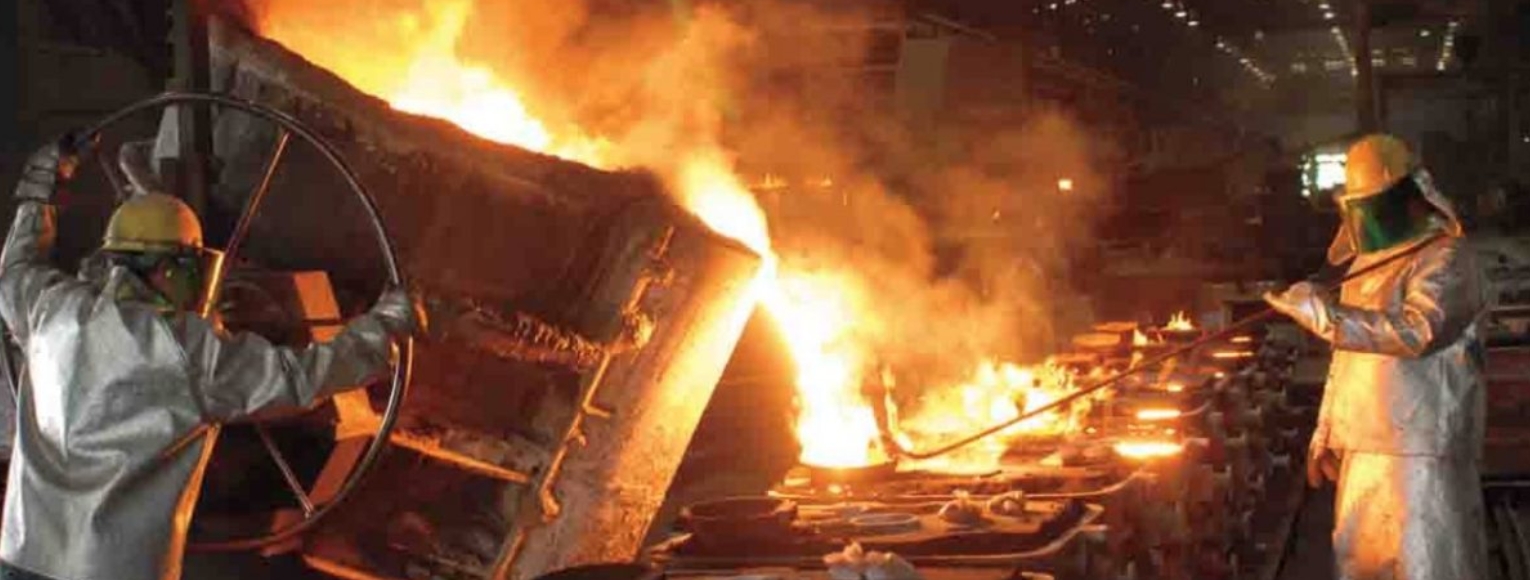Abstract
This article presents a comprehensive study on the process design and simulation of complex steel casting for a hoisting box. Based on the casting precision and surface quality requirements of the hoisting box castings, a sand casting process was determined, along with the selection of molding materials and casting process parameters. The specific dimensions of the gating system and risers were designed and calculated using the choke section method and modulus method. Furthermore, casting process diagrams and three-dimensional models were created using CAD and 3D software, respectively. Casting simulation software was utilized to predict potential shrinkage hole locations, and the process parameters were optimized to effectively control the size of these shrinkage holes. This study provides valuable insights and parameters for the process design of hoisting box castings, highlighting the importance of numerical simulation in the casting industry.

1. Introduction
Hoisting boxes are crucial components in elevator lifting devices, primarily used in transmissions, gearboxes, and reduction gearboxes. These castings are characterized by uneven wall thickness, complex shape and structure, and high mechanical property requirements, making them challenging to cast. Additionally, as low-alloy steel casting, hoisting boxes have a significant shrinkage rate, prone to hot spots and shrinkage cavities in critical areas, and even porosity. Therefore, the rational design of the casting process, along with the optimization of gating and risering, is vital for improving production efficiency, simplifying molding and coring processes, and enhancing casting quality.
This study focuses on the process design and simulation of a complex steel casting for a hoisting box. Through comprehensive analysis and numerical simulation, the casting process was optimized to minimize defects and ensure high-quality castings. The research findings provide valuable insights for steel casting manufacturers in the industry.
2. Structure and Material of the Hoisting Box
2.1 Structure of the Hoisting Box
Figure 1 illustrates the structure of the hoisting box casting. It has a length of 1088 mm, a cylindrical diameter of 400 mm, a maximum wall thickness of approximately 240 mm, a minimum wall thickness of 45 mm, and a net weight of about 1.060 kg. The component is cylindrical, with the upper part being thinner and the lower part thicker. The outer circle features square recesses, and the bottom inverted hook-shaped guide groove can affect mold removal. Furthermore, the casting requires numerous holes and grooves. According to the technical requirements, after rough machining, the areas on both sides of the ring shaft hole’s end faces need to undergo magnetic particle inspection with a detection standard of ASTM E125 and an acceptance criterion of no thermal cracks or shrinkage cavities. Inclusions up to grade 1 are allowed, with no internal chilled iron or core supports. Air pores up to grade 1 are permissible, with casting radii of R5 to R8 and dimensional tolerances complying with GB/T 104-2000. The casting material is ZG25CrNiMo, a low-alloy heat-resistant cast steel with good structural stability and ideal process performance.
2.2 Molding Materials
Based on the casting dimensional tolerances and technical requirements, both the mold and core sands were selected to be furan resin sands. The proportions of the molding sand were selected according to the casting technology manual, as shown in Table 1.
Table 1: Molding Sand Proportion
| Raw Material | Old Sand (%) | New Sand (%) | Resin (%) | Hardener (as % of Resin) | Tensile Strength (MPa) |
|---|---|---|---|---|---|
| Mold Sand | 40-65 | 35-60 | 1.5-1.7 | 30 | 0.4-0.7 |
| Core Sand | 60-70 | 30-40 | 1.7-2.0 | 30 | 0.7-1.2 |
3. Casting Process Parameters
Based on the structural characteristics of the casting, parting surfaces can be set at the top surface and the middle maximum cross-section of the casting to facilitate the removal of the pattern. There are two proposed parting surface schemes. In Scheme 1, although the parting surface is located at the maximum contour cross-section of the casting, it is prone to causing mismatch when the upper and lower molds are closed, and flashing is likely to occur at the parting surface during pouring, which can affect the cleaning process and appearance quality of the casting. In Scheme 2, the entire casting is placed within a single sand mold, eliminating the risk of mismatch. With the casting inverted, the upper part has a thicker wall, while the lower part has a thinner wall. The hot spots are located on the uppermost surface, facilitating sequential solidification and making it easier to place the riser. Therefore, Scheme 2 is adopted for the selection of the parting surface.
